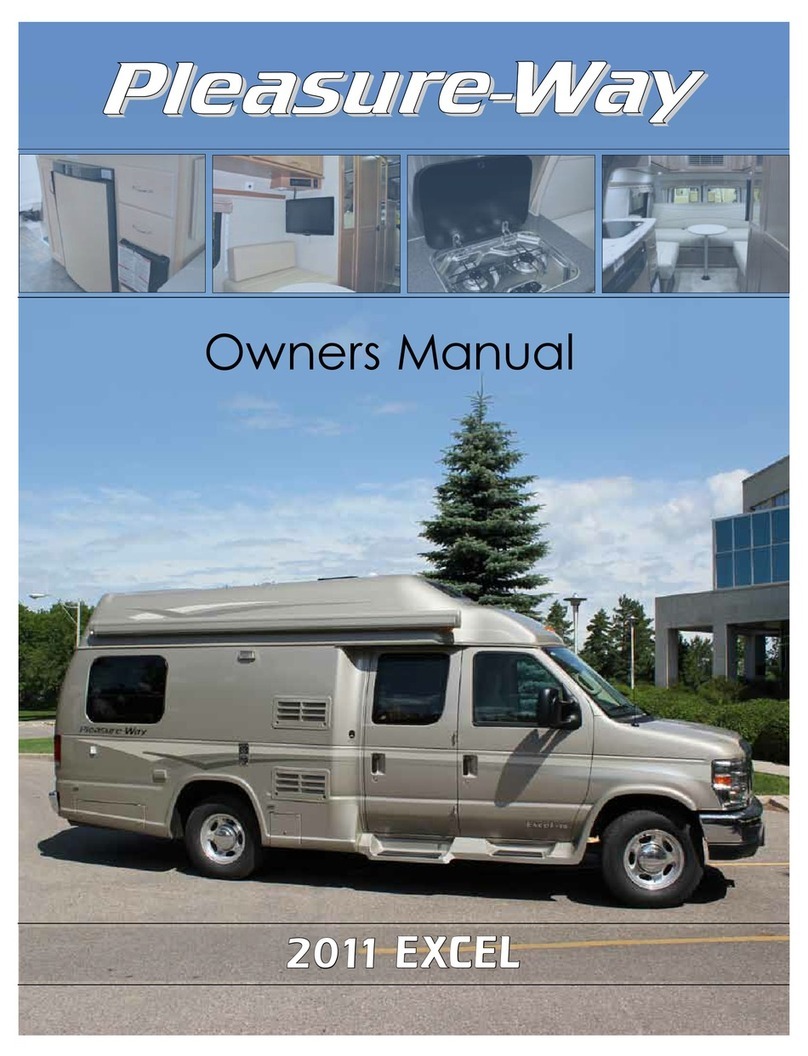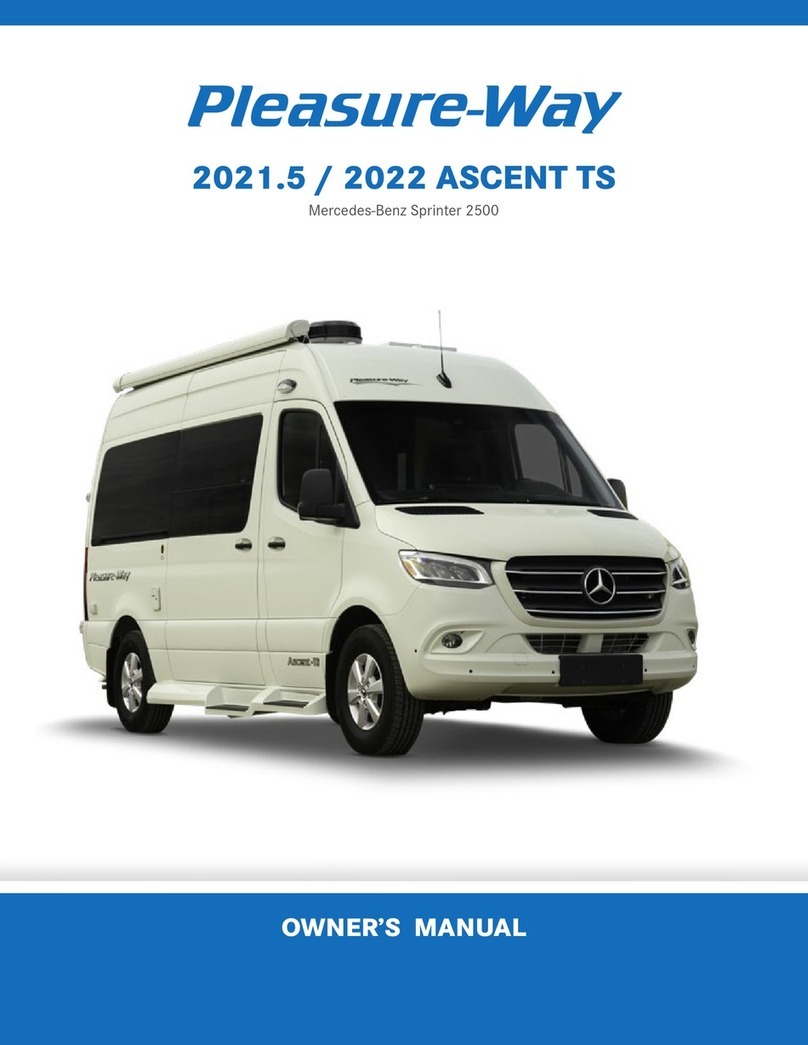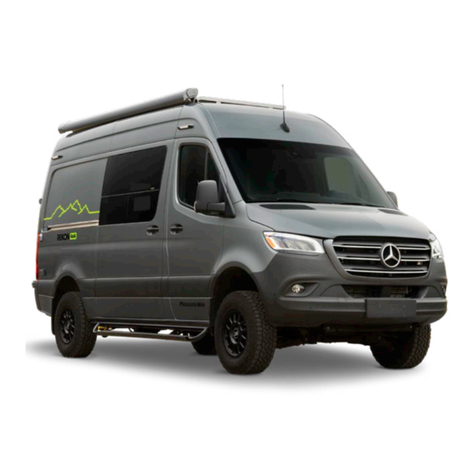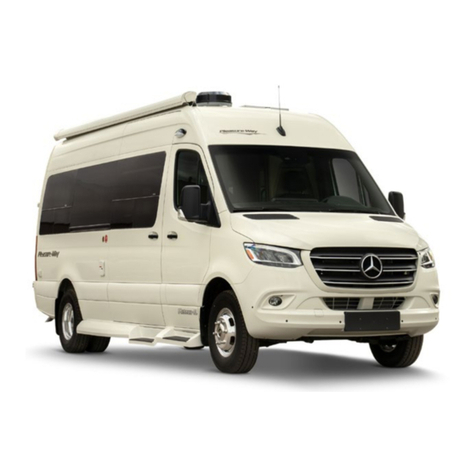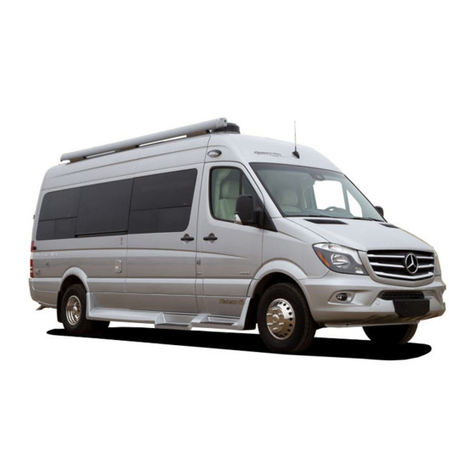
PLEASURE-WAY INDUSTRIES LTD. WARRANTIES & POLICIES
Pleasure-Way Warranty
Pleasure-Way Industries Ltd. warranties the specified new Motorhome free from defects in material and craftsmanship,
on the sections manufactured by Pleasure-Way Industries Ltd. under normal use and service. Pleasure-Way Industries
Ltd.’s obligation, under this warranty, shall be limited to 36 months/36,000 miles/60,000 kilometers (which ever comes
first) after the date of purchase by the original retail purchaser from an Authorized Pleasure-Way Dealer and shall be
limited to making good, at our factory, any part or parts thereof upon return to the factory.
The conditions of this warranty shall not and will not apply to the following:
1. if the Motorhome has been altered outside our factory in any way so as, in our sole opinion, to affect its
stability or reliability;
2. if the Motorhome, in our sole opinion, has been subject to misuse, negligence, or accident;
3. tires, refrigerator, stove, heater, chassis, power train, and any other component, which is under a separate
guarantee from the manufacturer, and service can be obtained from their facilities in North America;
4. unauthorized repairs, alterations or modifications;
5. routine maintenance;
6. failure of the coach and/or chassis resulting in incidental damages such as: loss of use of Motorhome;
inconvenience; cost of rental vehicle; and/or cost of accommodations, travel expenses & meals; and other
miscellaneous incidental expenses; and
7. damages resulting by: hail, tornadoes, lightning, floods, earthquakes, plow winds, fire, rain & environmental
conditions which include tree sap, tar, chemicals, oils, salts, and/or Acts of God.
The conditions of this warranty shall not and will not apply to degeneration due to wear and exposure after these
limitations:
1. for one year from the original retail purchase date or 12,000 miles/20,000 kilometers (which ever comes first),
by the original retail purchaser from an Authorized Pleasure-Way Dealer:
a) all seat, curtain, door panel and wall fabrics used in the coach;
b) exterior fibreglass surfaces;
c) window seals;
d) exterior power cable hatch, city water fill hatch, porch light, & exterior cable TV outlet;.
e) running board trim; and
f) carpet.
2. for 120-days from date of the original retail purchase by the original retail purchaser from an Authorized
Pleasure-Way Dealer:
a) black and gray water termination valves;
b) fresh water tank drain tap; and
c) exterior door catches, cam locks, thumb latches & hinges.
